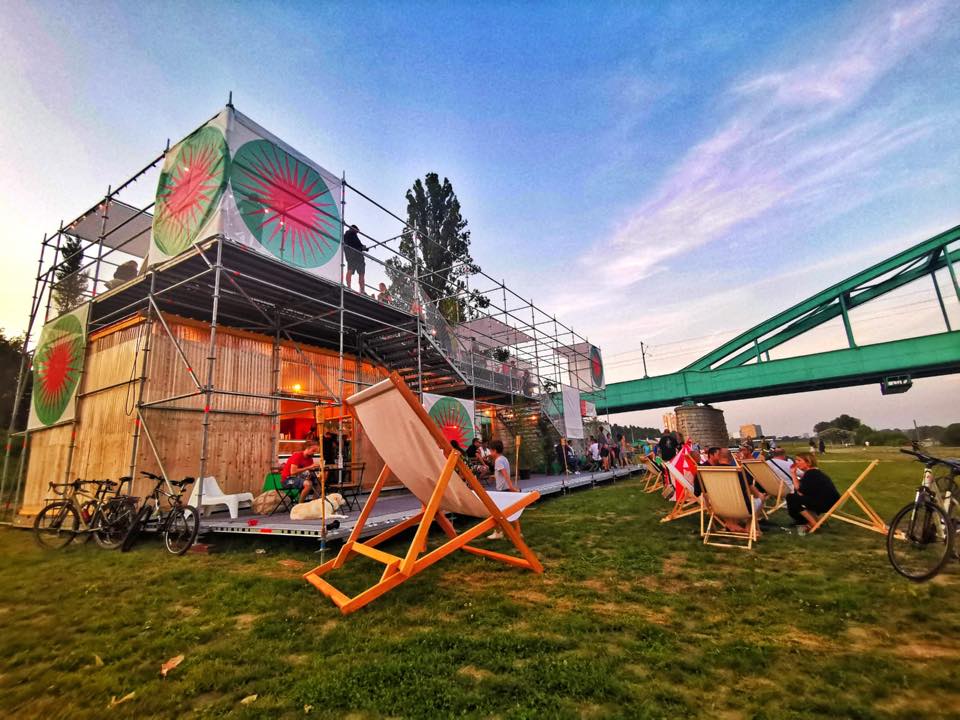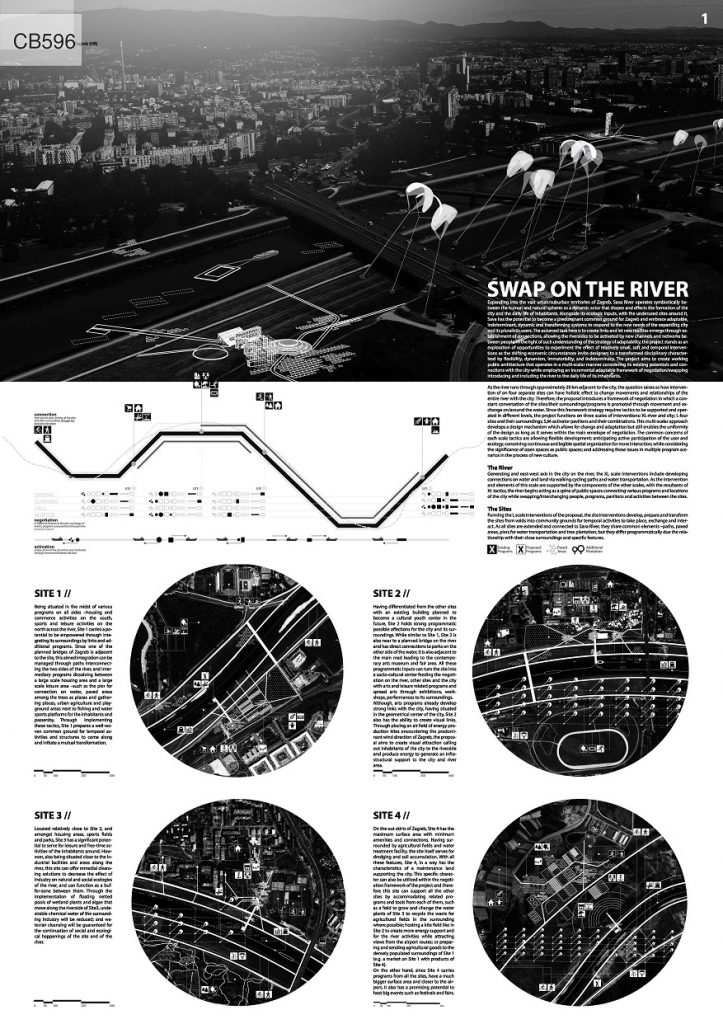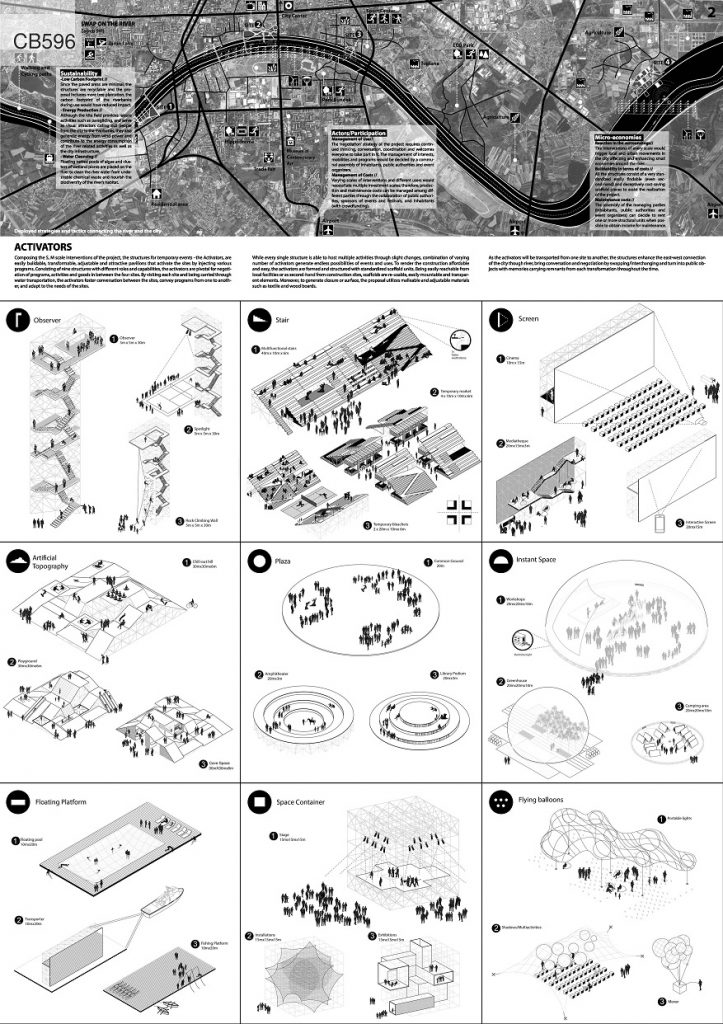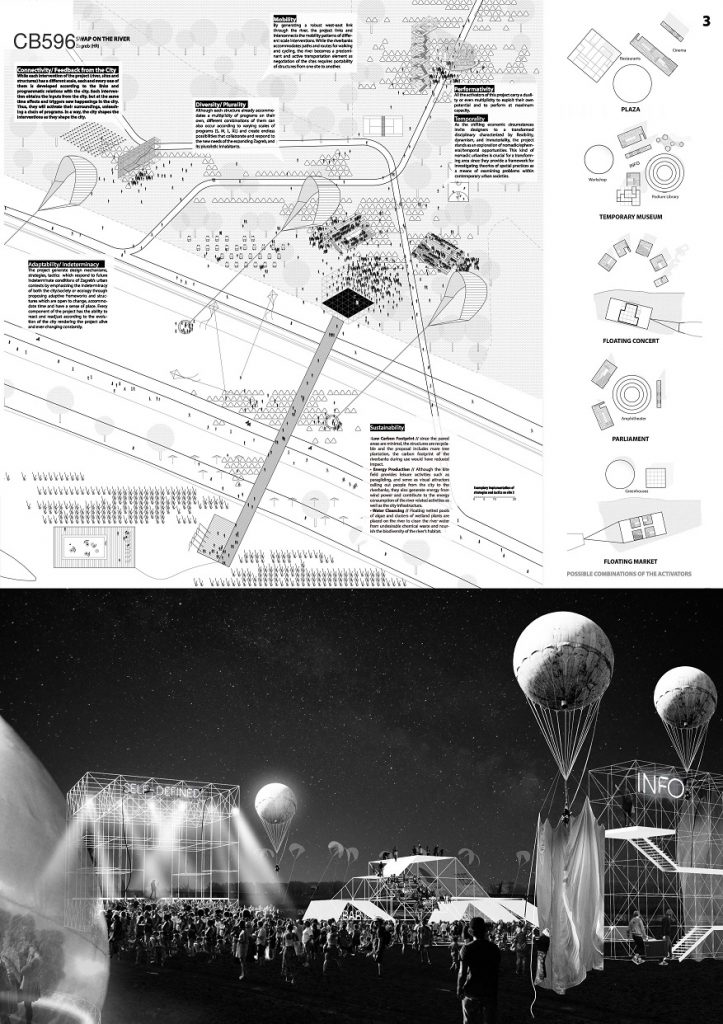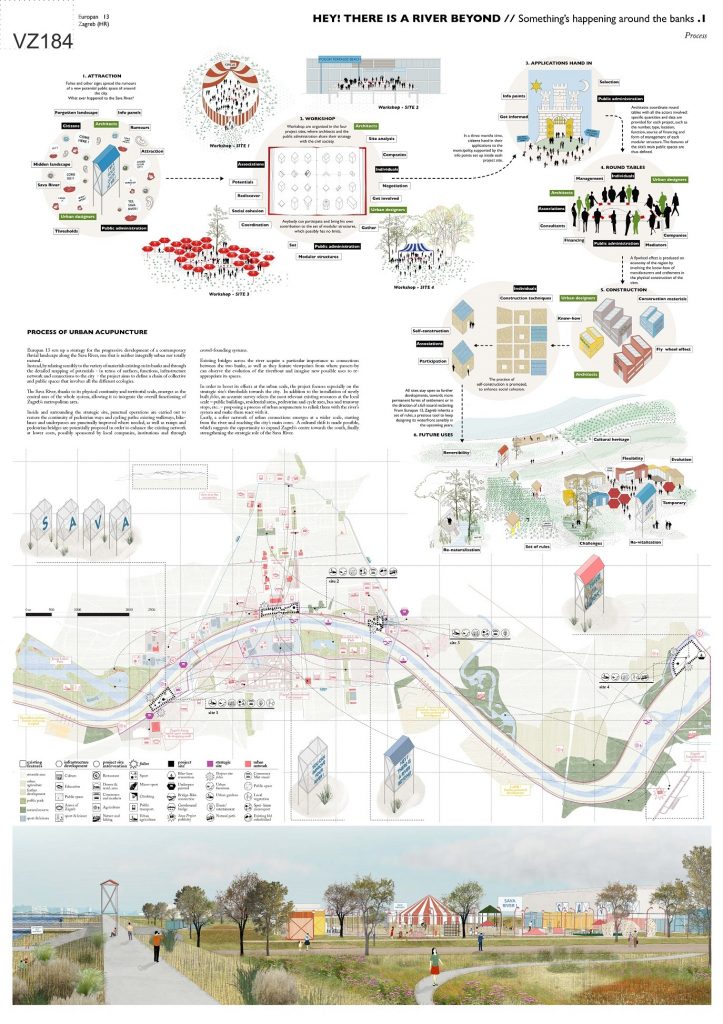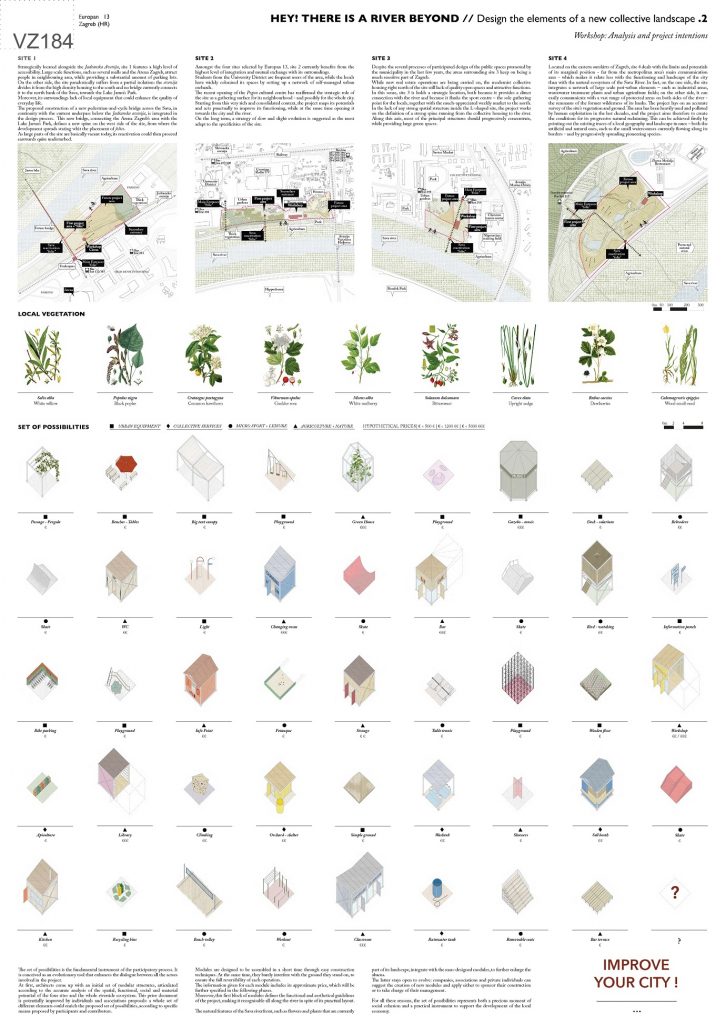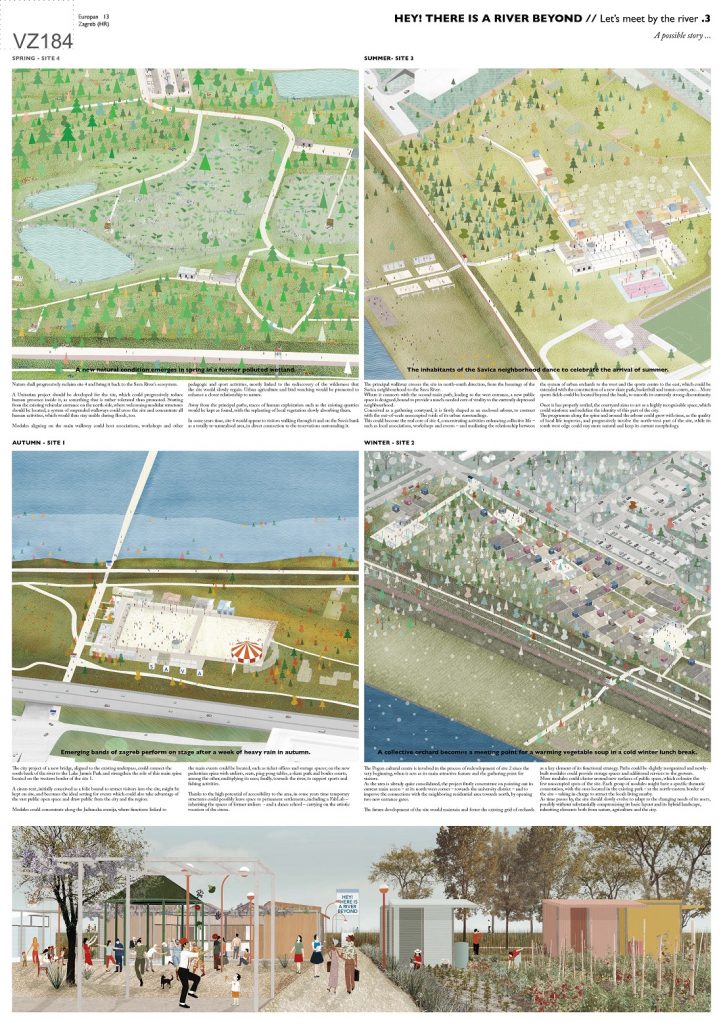Europan 13
TEMA EUROPANA 13 NASTAVLJA SE NA TEMU EUROPANA 12 – PRILAGODLJIVI GRAD
Predloženo je da Europan 13 nastavlja općenitu temu “prilagodljivi grad”: grad koji se prilagođava na potrebu za održivim razvojem, ali i prilagodljiv u kontekstu ekonomske krize kroz koju trenutno prolazi većina europskih gradova. Tri šira koncepta strukturiraju ovu temu:
Otpornost kao izazov: kako proširiti ili ponovno pronaći identitet gradskih strukturalnih elemenata (izgrađenih ili uređenih) u kontekstu značajnih promjena.
Socijalna prilagodljivost kao cilj: pomirenje koherencije tih struktura s evoluirajućim namjenama i praksama.
Ekonomija kao metoda: upravljanje urbanim transformacijama u kontekstu različitih dionika i načina, ali s ograničenim resursima i u eri „post-naftnog grada”
Ove tri teme donose promjene u urbanizmu i arhitekturi :
u rasporedu dionika – državna skrb naspram samoorganiziranja
Suština europskog grada nalazi se u dojmu zajednice. Svjedočimo prijelazu od sustava „državne skrbi” prema sustavu „samoorganiziranja”. Pitanje je kakav će biti novi odnos između javnog i privatnog. Tko će brinuti o javnom dobru, ako država bude uključena u manjoj mjeri? I što će to značiti za praksu arhitekata i urbanista?
u sadržaju – Razdvajanje naspram dijeljenja
Dijeljenje na nivou grada može potaknuti „osnaživanje” koegzistencije različitih kultura: očuvanje kolektivnog uz paralelno stvaranje ispravnije organizacije društva. Kako bi dijeljenje moglo doprinijeti razvoju jeftinijih i blažih rješenja za izgradnju ekološkog i održivog grada? Kako bi ono moglo pomoći da se regenerira okruženje zajedničkog stanovanja?
u procesu projektiranja – Objekt naspram projekta (procesa)
U svjetlu ekspanzije komunikacijskih alata i socijalnih mreža, naša kultura se sve manje zasniva na objektu; a ta pojava utječe na arhitekturu i urbanizam. Mnogi mladi arhitekti grade karijeru na projektima koji ne uključuju fizičke objekte. Ti objekti već mogu djelomično i postojati a smisao projekta je upravljanje postojećim, bavljenje društvenim konstrukcijama, razvoj konteksta i pitanje „urbanizma s manje ili bez rasta”.
Europan želi da se lokacije suoče sa značajnim izazovima prilagodljivosti europskih gradova te predlože konkretne inovacije u natječajnom programu, kako bi kod mladih natjecatelja potaknuli nove pristupe projektiranju.
Tema Europana 13 definirana je temeljem doprinosa 40 europskih stručnjaka.
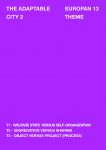
Zagreb (HR)
Mjesto: Zagreb, Hrvatska
Naseljenost: Grad 790,000 stanovnika
Područje provedbe projekta: 1.5 ha / 4.5 ha / 5.8 ha / 16 ha
Lokaciju predložio: Grad Zagreb
Vlasnik/vlasnici lokacije: Grad Zagreb, privatni vlasnici
Post-natječajna faza: The sites are proposed for temporary public use, organized by the City in cooperation with NGOs, citizens' organizations and similar stakeholders
Predstavnik tima: Arhitekt
Ovakav fleksibilni pristup u skladu je sa podtemama Europana 13, a niska cijena provođenja omogućit će lakšu provedivost projekta.
Partnerstvo s udrugama je mogući modalitet provođenja projekta uz direktno sudjelovanje građana kao budućih korisnika. Od natjecatelja je moguće tražiti nekoliko prijedloga korištenja uz istu urbanu opremu, dakle traži se višeznačnost objekata.
TEMA je adaptacija i revitalizacija zapuštenih gradskih lokacija u svrhu javnog korištenja; bez obzira na postojeću namjenu zatečenu na odabranim lokacijama, predlaže se PRIVREMENO uređenje u svrhu javnog korištenja kroz obnovu lokacije ne-građevinskim zahvatima.
OPIS ZADATKA: Uređenje bi podrazumjevalo unaprijeđenje komunalne infastrukture (gdje je potrebno), ugradnju fiksne urbane opreme (gdje je potrebno) te privremenu montažu demontažnih paviljona za javnu upotrebu (gdje je moguće).
– Planiranje održive mobilnosti u gradovima (SUMP): Planiranje za ljude
– Revitalizacija javnih gradskih površina
– uvođenje novih atrakcija u prostore javnog korištenja za i nakon Univerzijade 2016
– urbana obnova i razvoj grada
CILJ projekta je ponuditi ‘eksperimentalno rješenje uređenja’ na lokacijama koje imaju visok atraktivni potencijal, ali su zaustavljene u obnovi i razvoju radi različitih objektivnih okolnosti, uzrokovanih tranzicijskim procesima ali i gospodarskom situacijom. Stoga se – u iščekivanju konačnih rješenja za odabrane lokacije – predlaže promišljanje novih privremenih načina korištenja.
OČEKIVANI REZULTAT je prikaz mogućih scenarija javnog korištenja ‘nepravedno’ degradiranih prostora pomoću uvođenja novih društvenih sadražaja, pristupačnih najširoj javnosti – a bez agresivnih zahvata permanentnog karaktera, u prostoru.
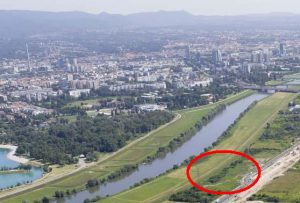 lokacija 1
lokacija 1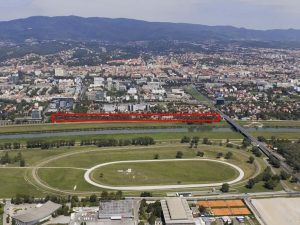 lokacija 2
lokacija 2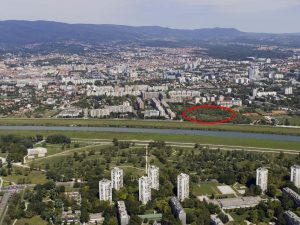 lokacija 3
lokacija 3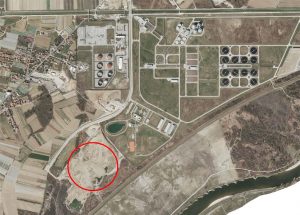 lokacija 4
lokacija 4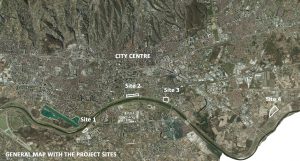
Entry Conditions
Entrants
Europan 13 is open to any team consisting of an architect in partnership or not with one or more professionals of the same or other disciplines of the urban-architectural field (architects, urban planners, landscapers, engineers, artists…)
Every team member, whatever his/her profession, must be under the age of 40 years old on the closing date for submission of entries.
Composition of the Teams
There is no limit to the number of participants per team. A registered team can modify its composition on the European website until the closing date for submissions. No further change shall be accepted after this date.
One team can submit a project on different sites and one person can be part of different teams provided that the submitted projects are not judged by the same jury.
Associates
Associates are considered to be authors of the project and are credited as such in all national and European publications and exhibitions. They are young professionals with a university degree recognised by the Directive 2005/36/EC of the European Parliament and of the Council of 7 September 2005 on the recognition of professional qualifications, in any of the relevant disciplines regardless of nationality.
The compulsory requirement is to hold such a degree. Membership in a European professional body is optional, except for associates without a European degree.
Contributors
Teams may include additional members, called contributors. Contributors may be qualified or not but none of them shall be considered as an author of the project.
Team Representative
Each team names one “Team Representative” among the associates. The Team Representative is the sole contact with the national and European secretariats during the whole competition.
The Team Representative must be an architect with a qualification from a European country or must have the architect status under the laws of a European country. In specific cases and when mentioned on the site definition (see Synthetic Site File), the Team Representative can be an architecture, urban or landscape professional (architect, landscaper, urban planner, architectengineer). In this case the team shall necessarily include at least one architect among the associates.
Non-Eligibility
No competition organizer and/or member of their families are eligible to take part in the competition on a site where he/she is involved. Still, he/she can participate on another national site in which he/she is not involved (in the case of people close to a member of a participating municipality) or on a site depending on another national jury.
Are considered as organizers: members of the Europan structures; employees and contractors working for partners with sites proposed in the current session, members of technical committees; observers; jury members and their employees.
Registration
Registration is done through the European website (www.europan-europe.eu) and implies the acceptance of the competition rules.
In compliance with French Act #78-17 of Jan. 6th, 1978, on Information Technology, Data Files and Civil Liberties the protection of personal data communicated during registration is guaranteed.
Europan 13 Website
The European website for the thirteenth session of the competition is available online from the opening date of the competition at the following url: www.europan-europe.eu
It includes: the complete European rules for the Europan 13 competition; the session theme; the synthetic and detailed site files grouped geographically or by themes; the composition of the juries; and an organisational chart of all the Europan structures.
The website also offers the possibility to register to the competition and submit the complete proposals.
Team Registration
Registration to the competition is done through the European website (Registrations section) and implies the payment of a 150€ fee. There shall be no refund of the registration fee.
This fee includes one Complete Site Folder and the printing –necessary for the evaluation– of the panels (on rigid support) as well as of the digital document by the national secretariats.
Payment is automatically confirmed on the website. The team can then access its personal area and the digital entry area and download the complete site folder for the selected site. Additional Complete Site Folders cost 50€ per site.
Information Available to Teams
Synthetic Site Files
The Synthetic Site Files present a summary vision of the site. They are available on the sites presentation pages of the European website and help the teams select their project site(s).
This document is in English (and sometimes also in the site language).
Composition of the Synthetic Site Files
The Synthetic Site Files provide for each site:
– Good-quality iconographic documents:
– 1 map of the city or conurbation identifying the location of the study site and giving the graphic scale;
– 1 aerial picture of the study site in its context identifying the location of the study site in red and the project site in yellow;
– 1 oblique aerial picture (semi-aerial) of the study site;
– 1 oblique aerial picture (semi-aerial) of the project site;
– 1 map of the area identifying the study site and the graphic scale;
– 1 map of the area identifying the project site and the graphic scale;
– at least 3 to 6 ground-level pictures showing the site’s characteristic elements (topography, natural features, existing architecture);
– Written information:
– the site category;
– the profile of the team representative: architect or professional of the urban design;
– names of the town and place; population of the town and conurbation; surface area of the study and project sites; site owner(s); expected follow-up after the competition;
– the developer’s and the city’s specific objectives; strategic issues of the site; relation the session topic: “The Adaptable City 2, Self-Organization – Sharing – Project (Process)”.
Complete Site Folders
The Complete Site Folders include detailed written documents on the city, the site, its context and the developers’ intentions as well as drawings, pictures and any graphic document required for the design process.
These Folders are available on the sites presentation pages of the European website (after registration on the site and logging in to the website) and help the teams design their project on the chosen site.
The documents in the Complete Site Folders are in English and may also be in the site language.
Composition of the Complete Site Folders
a. Pictures, diagrams and graphics
> Conurbation (territorial scale)
– 1 aerial picture of the city;
– 1 map on regional (urban geography) or urban scale (conurbation) with an appropriate graphic scale showing the major features structuring the area (buildings, networks, natural features).
> Study site (urban scale)
– 1 aerial picture of the study site;
– at least 1 semi-aerial picture of the study site;
– at least 5 ground-level pictures showing the characteristic features of the study site: topography, natural features, existing architecture, etc.;
– plans of the study site with an appropriate scale;
– characteristic features: infrastructure, existing and future plans, etc.
> Project site (local scale)
– at least 3 semi-aerial pictures of the project site;
– at least 10 ground-level pictures showing the characteristic features of the project site: 5 topography, natural features, existing architecture, etc.;
– map(s) of the project site with an appropriate scale, showing:
o the project site’s location within the study site;
o the project site’s plot divisions, constructions, natural elements, etc.;
– topographical map of the project site with an appropriate scale and, if necessary, characteristic features (buildings and natural features to be retained or not, etc.)
b. Content Document
The Content Document is a 10-to-15-page illustrated document aiming at providing a better understanding of the main elements of the context through the existing elements as well as through the site’s mutation issues and its environment. It includes the following divisions:
– A detailed analysis of the regional and urban context, putting in perspective the transformations of the city and the region and including all the elements on this scale that may have a current of future influence on the site: mobility networks, ecological elements, urban structure, landscape, etc., within the general framework of the adaptable city;
– A detailed analysis of the study site putting in perspective the transformation of the site (the site and its environment) and illustrating how the theme of adaptability is taken into account. The following information is also provided:
o Role of the study site in the city policy, with details on the goals of the planning imagined by the municipality;
o Programmatic framework: planned transportation networks; public and private spaces to build and/or upgrade, with assumptions about planned functions and/or dimensions; goals for public spaces and infrastructures; and detailed explanations of the choices of the developers for each aspect of the programmes.
– A detailed analysis of the project site putting in perspective the site transformation and the way to make it more adaptable. The programmatic framework is also detailed, with: the spaces to build and/or regenerate, with functions and dimensions; the precise goals for public spaces and infrastructures; detailed explanations of the developers’ intentions on the parts of the programmes to be included.
– The main elements linked to the Europan 13 themes – Self-Organization – Sharing – Project (Process) – and their implication on uses and flexibility of spaces (built and public), natural elements and implementation processes of the mutation.
– A description of the sociocultural context of the site, the city and the region and its evolution to help participants better understand the local urban lifestyles and the citizens’ rhythms.
FAQ
Questions on the sites
A meeting is organised on each site with the teams and the municipalities and/or developers to give a detailed picture of the issues related to the site. The national structure of the site then publishes a report in English in a maximum of two weeks after the meeting. This report is available online on the sites presentation pages of the European website. In addition to this an FAQ menu on sites is open on the European website for a limited period of time (see calendar).
Questions on the rules
An FAQ menu on rules is open on the European website for a limited period of time (see calendar).
Submission of Entries
Digital Submission
Digital submission is compulsory. It includes the 3 A1 panels, one digital document, the documents proving the eligibility of the team members and documents for the project communication (3 images + a short text).
The complete submissions shall be submitted by midnight (Paris time) on June 30th, 2015, through the European website (Entry section).
Teams can enter submissions on several sites, provided that those sites are located in different countries and/or assessed by different juries (case of associate countries).
Failure to comply with the hereunder-mentioned requirements on board presentation may result in the disqualification of the team.
The number of entries per site is available on the European website on the European map of the sites (column on the right).
Anonymity and Compulsory Content
The site name and the project title must be displayed on every document.
A specific code is automatically attributed to each project upon upload. The teams do not know this code, through which the jury members take note of the project. The teams’ identities are revealed via an automatic link between the code and the team on the online projects database.
Language
The panels and digital document shall be either written in English or bilingual (English + the site language).
Items to Submit
Submissions include PDF documents divided as follows:
– 3 vertical A1 project panels;
– 1 horizontal A3 digital document;
– Documents proving the eligibility of the team members;
– Documents for communication (3 images + a short text)
Project panels
Content – The 3 panels must:
– explain the urban ideas developed in the project with reference to the site issues and the thematic orientations of the proposal;
– present the project as a whole, highlighting the architecture of the project, and particularly the relationship between the new developments and the site’s existing context, including three-dimensional representations of the project
All graphic and descriptive documents must have a graphic scale.
Technical spectifications:
– PDF format;
– Vertical A1 (L 594 mm x H 841 mm) ;
– Maximum 20 Mb
– One box (L 60 mm x H 40 mm) is left blank in the upper left corner for the automatic insertion of the code; the name of the city appears next to it;
– Panels numbered from 1 to 3 in the upper right corner;
– The team is free to decide on the positioning of the proposal title.
Digital Document
The digital document is composed of 7 pages maximum explaining the content of the project through texts, schemes and/or drawings.
Technical specifications:
– PDF format;
– Horizontal A3 (L 420 mm x H 297 mm)
– Maximum 15 Mb
– One box (L 60 mm x H 40 mm) is left blank in the upper left corner of each page for the automatic insertion of the code.
Model for the Digital Document
Documents to prove the eligibility of the team members
Documents for the disclosure of names and verification of the validity of the proposals shall be uploaded as PDF’s on the European website.
Personal information include:
> FOR THE TEAM: the Team Form and Declaration of Author- and Partnership and of Acceptance of the competition rules available online on the team’s personal area; to be filled out and signed;
> FOR EACH TEAM MEMBER:
– A copy of an ID document with a picture, providing evidence that they are under the age of 40 at the closing date for submission of entries (see calendar.)
– A copy of their European degree as an architectural, urban or landscape professional (architect, landscaper, urban planner…) or proof of such a status under the law of a European country.
No other document than the ones above-listed is necessary.
These personal documents must be uploaded individually for each team member. The upload of one sole document with all the required information (copies of the ID’s and degrees) will not be accepted.
Documents for the project communication
Each project must be summered up as follows:
– One short text of 1,500 signs (spaces included, to be typed in during submission);
– 3 separate PDF images that symbolize the project (max. 1Mb per image).
Control of the Submissions
Each team can check the upload of their projects on their online personal area. They can also –if needed– modify these documents until the deadline for submissions.
A period of 3 days is left open after the deadline for submissions (see Calendar) for the European secretariat to control the upload of each submission sent before the expiry of the deadline, as well as to correct the potential problems that might have appeared during the upload of the documents.
Results and Prizes
Results
All the results for Europan 13 are available online from December 4th, 2015, on the European website (Results section).
Winners
Winners receive a reward of the equivalent of €12,000 (all taxes included) in the currency of the site’s country (at the exchange rate on the date of the announcement of the results). The organizers undertake to abide by the decisions of the national juries and to pay the reward within 90 days of the announcement of the results.
Runners-up
Runners-up receive a reward of the equivalent of €6,000 (all taxes included) in the currency of site’s country (at the exchange rate on the date of the announcement of the results). The organizers undertake to abide by the decisions of the national juries and to pay the reward within 90 days of the announcement of the results.
Special Mentions
A Special Mention can be awarded to a project considered innovative although not completely adapted to the site. The authors of such proposals do not receive a reward.
Publication of the Competition Results
Events
– At the national scale of the organizing and associate countries
Promotion is organized around the competition launch.
The results announcement is accompanied with results ceremonies and presentations and/or workshops creating a first contact between the winning teams and the site representatives.
– At the European scale
A European event called Inter-Sessions Forum is the link between a finishing session and the beginning of the new one. This forum gathers the winning teams and site representatives of the finishing session and the site representatives of the new one around the results and first implementation steps of the projects awarded during the last session.
A €500 compensation is granted by the National Secretaries to each winning team (winners and runner-up) participating to the Forum to cover the journey and accommodation expenses.
Publications
The competition results can be the opportunity for publications in every organizing or associate country.
The European secretariat communicates on the European results along with expert analyses.
Websites
Websites are open by the national and European structures to promote the current session, future events and archives (previous sessions, team portraits, etc.)
Rights and Obligations
Ownership
All material submitted to the organizers becomes their property, including reproduction rights. The intellectual property rights remain the exclusive property of their author(s).
Exhibition and Publication Rights
Moratorium on Publication
Teams may not publish drawings submitted to the competition or disclose their names by using their project for any communication before the official announcement of the results. Any such publication may result in the disqualification of the team.
Publications
The organisers reserve the right to publish all the projects submitted to them after the official announcement of results.
Projects are exhibited or published under the names of their authors.
Disputes
The Council of the Europan European Association, which is empowered to arbitrate, shall hear any dispute.
List of Europan 13 Competitions
The Contact section of the European website shows the detailed national competition conditions country by country (number of sites and prizes, conditions of construction rights, etc.) as well as the details of the national and European structures, with the names of the people working for them.
The Jury section of the European website lists the members of the national juries.
PREPARATION
June 2014 – Feb. 2015: Site research and problematization
Sep. 27th, 2014: Inter-Sessions Forum, E13 Sites – Debates around the topics and strategies of the preselected sites by families
COMPETITION
Launch and Registration
Mo. March 2nd, 2015
– Launch of the competition on the European website with theme, rules, descriptions of the national Europan structures, short presentations of the sites proposed for the session and lists of the national juries.
– Opening date for registration on the European website and download of the complete site folders
Questions on the sites and rules via the Internet forum
Fr. May 15th, 2015: Deadline for submitting questions
Fr. May 31st, 2015: Deadline for answers to questions
Submission of entries
Tu. June 30th, 2015: Deadline for registration & submitting entries
We. July 1st, 2015: Publication of a temporary listing of submitted projects
Mo. July 6th, 2015: Deadline for controlling submissions & Publication of the definitive listing of submitted projects
Selection
July-October 2015: Shortlisting of entries by the national juries
October 2015:
– Comparative European analysis of the shortlisted ideas
– Forum of Cities and Juries
November 2015: Final selection of the winning projects by the national juries
Results
Fr. December 4th, 2015: Announcement of the results
November 2016: Inter-Sessions Forum
OCJENJIVAČKI SUD EUROPANA 13
Bojan BALETIĆ (HR) Arhitekt, Arhitektonski fakultet u Zagrebu, član Nadzornog odbora studentskog centra Varaždin
Damir HRVATIN (HR) Arhitekt, Grad Poreč, pročelnik Upravnog odjela za prostorno planiranje i zaštitu okoliša, Poreč
Krešimir ROGINA (HR) Arhitekt, Penezić&Rogina arhitekti, Zagreb
Jordi QUEROL (ES) Arhitekt i urbanist, Barcelona
Simon HARTMANN (CH) Arhitekt, HHF Architects, Basel
Nikola RADELJAKOVIĆ (HR) NUMEN, dizajner, Zagreb
Sonja LEBOŠ (HR) Urbana antropologinja, Zagreb
ZAMJENSKI ČLANOVI
Vanja RISTER (HR) Arhitekt, Arhitektonski fakultet u Zagrebu
Kristina CAREVA (HR) Arhitektica, Arhitektonski fakultet u Zagrebu
I. NAGRADA
radu pod šifrom CB596 „SWAP ON THE RIVER“
Autor(i): Carlos Zarco Sanz, arhitekt, Španjolska
Suradnici: Sara Palomar Perez, arhitektica, Španjolska; Zuhal Kol, arhitektica, Turska; Jose Luis Hidalgo, arhitekt, Španjolska
II. NAGRADA
radu pod šifrom VZ184 „HEY! THERE IS A RIVER BEYOND“
Autor(i): Emanuele Romani, arhitekt, Italija
Suradnici: Francesca Coden, arhitektica, Italija; Alessandro Benetti, arhitekt-urbanist, Italija; Margherita Locatelli, arhitektica, Italija; Filippo Pasini, arhitekt, Italija; Lorenzo Santosuosso, arhitekt-urbanist, Italija
Implementacija
Realizacija projekta prvonagrađenog tima započeta 2018., izvedba u kolovozu 2019., što predstavlja prvu Europanovu implementaciju u Hrvatskoj.
